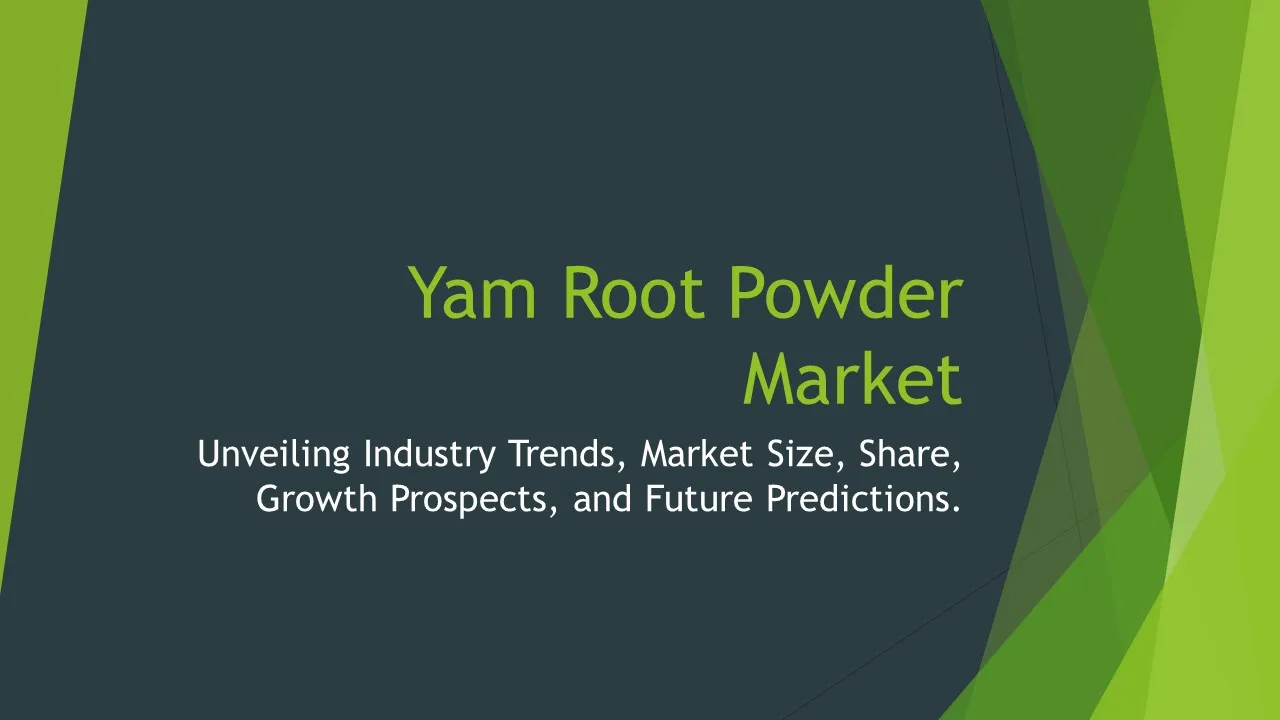Sodium Carbonate
Sodium Carbonate Market Segments - by Product Type (Light Sodium Carbonate, Dense Sodium Carbonate, Soda Ash), Application (Glass Manufacturing, Detergents & Cleaners, Chemical Intermediates, Water Treatment, Others), End-Use Industry (Chemicals, Glass, Detergents & Soaps, Paper & Pulp, Others), Grade (Industrial Grade, Food Grade, Pharmaceutical Grade), and Region (North America, Europe, Asia Pacific, Latin America, Middle East & Africa) - Global Industry Analysis, Growth, Share, Size, Trends, and Forecast 2025-2035
- Report Preview
- Table Of Content
- Segments
- Methodology
Sodium Carbonate Market Outlook
The global sodium carbonate market is projected to reach approximately USD 23.45 billion by 2035, growing at a CAGR of 4.2% during the forecast period from 2025 to 2035. This growth is primarily driven by the increasing demand for sodium carbonate across various applications such as glass manufacturing, detergents and cleaners, and chemical intermediates. The rising trend of urbanization and industrialization in emerging economies also significantly contributes to the market expansion, particularly in the Asia Pacific region. Additionally, the growing awareness regarding the importance of water treatment processes is propelling the need for sodium carbonate in this sector, as it plays a crucial role in pH adjustment and softening water. Furthermore, technological advancements in production processes are enhancing the purity and efficiency of sodium carbonate, making it more appealing for various industries.
Growth Factor of the Market
The growth of the sodium carbonate market is driven by several key factors that are shaping its future trajectory. One of the primary drivers is the increasing demand from the glass manufacturing industry, where sodium carbonate serves as a flux, lowering the melting point of silica and enhancing the overall quality of glass products. Moreover, the burgeoning detergent and cleaning products market is significantly influencing the sodium carbonate demand, as it is widely used as a cleaning agent due to its alkaline properties. The chemical industry, which utilizes sodium carbonate for producing various chemical intermediates, is also contributing to the market growth as more companies seek sustainable and efficient raw materials. Furthermore, the rise in environmental concerns is pushing industries to opt for sodium carbonate in water treatment applications, promoting cleaner and safer processes. Lastly, the expanding pharmaceutical and food industries are creating new avenues for food-grade and pharmaceutical-grade sodium carbonate, further bolstering market growth.
Key Highlights of the Market
- The global sodium carbonate market is expected to reach USD 23.45 billion by 2035.
- The market is projected to grow at a CAGR of 4.2% from 2025 to 2035.
- Asia Pacific holds a significant share of the market due to rapid industrialization.
- The demand from glass manufacturing is one of the leading growth drivers.
- Technological advancements are improving production efficiency and product quality.
By Product Type
Light Sodium Carbonate:
Light sodium carbonate, often referred to as soda ash light, is a key product type in the sodium carbonate market, characterized by its lower density compared to dense sodium carbonate. This product is commonly utilized in the glass manufacturing process, where it serves as a flux to reduce the melting point of silica, thereby enhancing the quality of glass. Additionally, light sodium carbonate is used in the production of detergents and cleaning products, where its alkaline nature helps to remove stains and soften water. With the increasing demand for glass products and cleaning agents, the light sodium carbonate segment is expected to witness steady growth, particularly in regions with expanding manufacturing capabilities such as Asia Pacific and North America. Furthermore, the versatility of this product in various applications makes it a popular choice among manufacturers seeking cost-effective solutions.
Dense Sodium Carbonate:
Dense sodium carbonate, or soda ash dense, is a more concentrated form of sodium carbonate that is utilized across various industrial applications. This product type is particularly favored in the glass manufacturing industry, where its high purity and density make it ideal for producing high-quality glass products, including flat glass and container glass. Moreover, dense sodium carbonate also finds applications in the chemical industry, particularly in the production of sodium bicarbonate and other sodium-based chemicals. The demand for dense sodium carbonate is expected to grow as industries increasingly focus on producing high-value products that require superior raw materials. Additionally, the use of dense sodium carbonate in water treatment processes, where it aids in pH adjustment and water softening, further enhances its market potential, especially in areas facing water quality challenges.
Soda Ash:
Soda ash refers to the term commonly used to describe sodium carbonate, encompassing both light and dense varieties. It is widely recognized for its applications across multiple industries, including glass manufacturing, detergents, and chemicals. The versatility of soda ash makes it an indispensable raw material in the production of various consumer goods. Additionally, as environmental standards become more stringent, the demand for soda ash is expected to rise due to its effectiveness in cleaning and water treatment processes. The soda ash segment is anticipated to see significant growth as manufacturers seek sustainable solutions that align with eco-friendly practices. With its established role in key sectors, soda ash remains a central focus in the sodium carbonate market, driven by its extensive applicability and essential properties.
By Application
Glass Manufacturing:
Glass manufacturing is one of the primary applications of sodium carbonate, where it is used extensively as a flux to lower the melting point of silica. This application not only enhances the quality of the glass produced but also improves the overall energy efficiency of the melting process. As the demand for glass products continues to rise in various sectors such as construction, automotive, and packaging, the glass manufacturing segment is expected to witness robust growth. Furthermore, the increasing trend towards sustainable and recyclable materials in glass production is driving manufacturers to adopt sodium carbonate as a key ingredient. The market for glass manufacturing is particularly strong in Asia Pacific and North America, where urbanization and infrastructure development projects are fueling the demand for glass products.
Detergents & Cleaners:
The detergents and cleaners application segment is another significant contributor to the sodium carbonate market, driven by the increasing consumer demand for effective cleaning agents. Sodium carbonate is widely used in domestic and industrial cleaning products due to its ability to soften water, enhance cleaning efficiency, and act as a buffering agent. As the global trend towards hygiene and cleanliness intensifies, the detergents and cleaners segment is poised for substantial growth. Additionally, the rising awareness about the environmental impact of cleaning products is encouraging manufacturers to formulate eco-friendly detergents that incorporate sodium carbonate. This shift toward sustainable cleaning solutions is likely to bolster the market as consumers increasingly seek products that are both effective and environmentally responsible.
Chemical Intermediates:
Sodium carbonate plays a vital role as a chemical intermediate in the production of various chemicals, including sodium bicarbonate, soda ash, and other sodium-based compounds. This application is critical for industries that rely on these chemicals for further processing and production. The growth in this segment is closely tied to developments in the chemical industry, as an increase in manufacturing activities leads to higher demand for sodium carbonate as a raw material. Furthermore, the ongoing innovation in chemical processing techniques is likely to enhance the efficiency and applications of sodium carbonate, creating further opportunities for growth. As countries focus on expanding their chemical manufacturing capabilities, the demand for sodium carbonate in this segment is expected to rise significantly.
Water Treatment:
The use of sodium carbonate in water treatment applications has gained prominence due to its effectiveness in pH adjustment and water softening. As global water scarcity and quality issues become more pressing, the demand for sodium carbonate in water treatment processes is expected to rise. This shift is further supported by increasing regulations aimed at improving water quality, which compels industries to adopt efficient treatment solutions. Sodium carbonate's role in enhancing the effectiveness of water treatment systems not only addresses compliance but also promotes public health. This application is particularly relevant in regions facing challenges related to water supply and quality, marking it as a key growth area for sodium carbonate manufacturers.
By Use Industry
Chemicals:
The chemicals industry represents a significant use sector for sodium carbonate, as it serves as a crucial raw material in the production of various sodium-based chemicals. Sodium carbonate is utilized to manufacture products such as sodium bicarbonate, which is widely used in food processing, pharmaceuticals, and personal care products. The rising demand for chemical products across multiple sectors, including agriculture, food processing, and manufacturing, is anticipated to propel the need for sodium carbonate. As environmental regulations become more stringent, industries are increasingly looking for sustainable chemicals, further driving the demand for sodium carbonate as a green alternative in chemical formulations. The chemicals sector is expected to remain a key consumer of sodium carbonate, bolstered by continuous innovations and the expansion of chemical manufacturing facilities globally.
Glass:
The glass industry is a major end-use segment for sodium carbonate, where it plays an essential role in the manufacturing of various glass products, including flat, container, and specialty glass. Sodium carbonate not only acts as a flux but also contributes to the clarity, durability, and aesthetic properties of glass. With the continuous growth in construction and automotive industries, the demand for glass products is witnessing a significant rise, thereby driving the need for sodium carbonate. Additionally, the trend towards lightweight and energy-efficient glass solutions is further propelling manufacturers to utilize sodium carbonate, as it improves the melting process and minimizes energy consumption. The glass industry's reliance on sodium carbonate positions it as an integral component in the overall market landscape.
Detergents & Soaps:
Sodium carbonate is widely used in the detergents and soaps industry, where it functions primarily as a cleaning agent and water softener. This application is particularly significant as consumer preferences for effective and environmentally friendly cleaning products continue to grow. The increasing awareness of health and hygiene is boosting the demand for household and industrial cleaning products, wherein sodium carbonate plays a vital role in enhancing product performance. Furthermore, with the rising trend towards sustainable and biodegradable cleaning solutions, manufacturers are increasingly reformulating their products to include sodium carbonate as a key ingredient. The detergents and soaps segment is thus witnessing robust growth, driven by changing consumer behavior and an expanding market for effective cleaning solutions.
Paper & Pulp:
The paper and pulp industry utilizes sodium carbonate as a process chemical in the production of various paper products. It serves as a source of alkali needed for pulping and helps in improving the brightness and quality of the final product. As the demand for paper products, such as packaging materials, continues to grow due to e-commerce and sustainability trends, the sodium carbonate market in this sector is expected to expand. Additionally, with the increasing emphasis on sustainable practices, the paper industry is increasingly adopting sodium carbonate-based processes that minimize environmental impact. This focus on sustainability, coupled with the rising consumption of paper products, positions the paper and pulp industry as a significant end-use sector for sodium carbonate, contributing to its overall market growth.
By Grade
Industrial Grade:
Industrial grade sodium carbonate is widely utilized across various sectors due to its effectiveness and cost-efficiency. This grade is primarily used in applications such as glass manufacturing, detergents, and chemical production processes. The industrial grade segment holds a substantial share of the sodium carbonate market, driven by the overwhelming demand from manufacturing industries. As companies continue to ramp up production and expand their operations to meet consumer needs, the demand for industrial-grade sodium carbonate is expected to grow steadily. Moreover, the ability of industrial-grade sodium carbonate to meet the stringent quality and performance requirements of different applications enhances its attractiveness among manufacturers, further solidifying its position in the market.
Food Grade:
Food grade sodium carbonate is used in various food processing applications, particularly as a leavening agent and acidity regulator. This grade of sodium carbonate meets stringent safety and quality standards, making it suitable for consumption and food-related processes. With the growing emphasis on food safety and quality, the demand for food-grade sodium carbonate is witnessing an upward trend, especially in the food and beverage industry. As consumers become more health-conscious and seek cleaner labels in food products, manufacturers are increasingly incorporating food-grade sodium carbonate into formulations. The increasing demand for processed foods and the expansion of the food industry in emerging markets are expected to propel the growth of the food-grade segment in the sodium carbonate market.
Pharmaceutical Grade:
Pharmaceutical grade sodium carbonate is utilized in the production of various pharmaceutical products, where it serves as a buffering agent and pH regulator. The stringent regulations governing the pharmaceutical industry necessitate the use of high-purity raw materials, making pharmaceutical-grade sodium carbonate essential for many formulations. As the healthcare sector continues to grow and evolve, driven by technological advancements and increasing healthcare expenditure, the demand for pharmaceutical-grade sodium carbonate is anticipated to rise. Additionally, the growing focus on specialty pharmaceuticals and personalized medicine creates further opportunities for this segment, as manufacturers look for reliable and high-quality ingredients to formulate effective products. The pharmaceutical grade segment is expected to witness robust growth, bolstered by the increasing need for pharmaceutical products worldwide.
By Region
The regional analysis of the sodium carbonate market highlights significant differences in demand and growth potential across various geographical areas. North America has historically been a strong market for sodium carbonate, driven by its extensive glass manufacturing and chemical industries. The region is projected to maintain a steady growth rate, with the market expected to reach USD 5.5 billion by 2035. In Europe, the sodium carbonate market is also expected to grow consistently, particularly due to advancements in sustainable manufacturing processes and increasing environmental regulations. The European market is estimated to be valued at USD 4.2 billion by 2035, propelled by the growing emphasis on eco-friendly production methods in the glass and detergent sectors.
Meanwhile, the Asia Pacific region is anticipated to emerge as the fastest-growing market for sodium carbonate, with a projected CAGR of 5.5% between 2025 and 2035. This growth is largely attributed to rapid industrialization, urbanization, and the expanding glass manufacturing sector, particularly in countries like China and India. The demand for sodium carbonate in other applications such as chemicals and water treatment is also increasing significantly in this region. The Latin America and Middle East & Africa regions are expected to see moderate growth rates, driven by increasing investments in infrastructure and industrial development, with market sizes projected at USD 2.8 billion and USD 1.5 billion, respectively, by 2035. Overall, the diverse regional dynamics of the sodium carbonate market reflect varying levels of industrial activity and demand across the globe.
Opportunities
The sodium carbonate market presents numerous opportunities for growth and expansion, particularly in emerging economies where industrialization and urbanization are on the rise. As countries in Asia Pacific, Latin America, and Africa strive to improve their infrastructure and manufacturing capabilities, the demand for sodium carbonate is expected to increase significantly across various sectors, including glass, chemicals, and detergents. The rising consumer awareness of sustainability and environmental responsibility is also creating opportunities for manufacturers to innovate and develop eco-friendly products that incorporate sodium carbonate as a key ingredient. Furthermore, the advancement of production technologies and processes is enabling companies to enhance the quality and reduce the costs associated with sodium carbonate production, making it a more attractive option for manufacturers. Companies that effectively leverage these opportunities can position themselves strategically in the sodium carbonate market, capitalizing on the growing demand and changing consumer preferences.
Another area of opportunity lies in the increasing focus on water treatment solutions. With the global water crisis becoming more pressing, industries and municipalities are seeking effective and sustainable methods to ensure clean water supply. Sodium carbonate's role in pH adjustment and water softening makes it a sought-after solution in this context. The growing investments in water treatment infrastructure, especially in regions facing water quality challenges, provide a substantial market opportunity for sodium carbonate suppliers. Additionally, the pharmaceutical and food industries are likely to continue expanding, creating a consistent demand for food-grade and pharmaceutical-grade sodium carbonate. Manufacturers that align their products with these trends and prioritize quality and sustainability will be well-positioned to capitalize on the lucrative opportunities in the sodium carbonate market.
Threats
Despite the promising growth prospects, the sodium carbonate market faces several threats that could hinder its progress. One of the primary challenges is the volatility in raw material prices, which can significantly impact production costs and profit margins for manufacturers. Fluctuations in the prices of raw materials such as limestone and sodium chloride are influenced by various factors, including supply chain disruptions, geopolitical tensions, and changes in environmental regulations. These uncertainties can create challenges for sodium carbonate producers, potentially leading to increased prices for end-products and decreased competitiveness in the market. Additionally, the rising trend of alternative cleaning agents and chemicals poses a threat to the sodium carbonate market, as manufacturers and consumers explore more sustainable and cost-effective solutions.
Furthermore, environmental regulations around chemical manufacturing are becoming increasingly stringent, necessitating that companies comply with new standards and practices. This trend may require significant investments in technology and processes to ensure compliance, leading to higher operating costs for companies in the sodium carbonate market. Additionally, the increasing focus on reducing carbon emissions and environmental impact could push some manufacturers to rethink their production processes, potentially affecting sodium carbonate supply. As these challenges continue to evolve, companies operating within the sodium carbonate market need to adapt their strategies and operations to mitigate potential risks while ensuring sustainable growth.
Competitor Outlook
- Solvay S.A.
- Tata Chemicals Limited
- OCI Chemical Corporation
- Tronox Holdings plc
- General Chemical & Supply Co.
- FMC Corporation
- Hindustan Zinc Limited
- Shijiazhuang Jianghua Microbe Technology Co., Ltd.
- China National Chemical Corporation (ChemChina)
- Yara International ASA
- Natural Soda LLC
- British Soda Ash Company Limited
- Jiangsu Jialin Industry Co., Ltd.
- Aditya Birla Chemicals
- Nordic Chemicals (NORDIC)
The competitive landscape of the sodium carbonate market is characterized by a mix of global and regional players, each vying for market share through innovative product offerings, strategic collaborations, and improved manufacturing processes. Major companies such as Solvay S.A. and Tata Chemicals Limited lead the market due to their extensive production capabilities and diverse application portfolios. These companies are continuously investing in research and development to enhance product quality and develop new applications for sodium carbonate, enabling them to meet changing consumer demands and regulatory requirements. Additionally, partnerships and acquisitions are common strategies employed by these companies to expand their market presence and access new customer segments, particularly in emerging markets where demand for sodium carbonate is on the rise.
Another significant player in this market is OCI Chemical Corporation, known for its focus on sustainability and environmentally friendly production methods. The company's commitment to reducing its carbon footprint and enhancing operational efficiency positions it well within the sodium carbonate market, appealing to eco-conscious consumers and industries. Similarly, Tronox Holdings plc is leveraging its strong vertical integration to control production costs and maintain high product quality, allowing it to remain competitive in the global market. The presence of these major players, along with a growing number of regional manufacturers, creates a dynamic competitive landscape that contributes to ongoing innovation and market growth.
Key players such as General Chemical & Supply Co. and Hindustan Zinc Limited are also enhancing their competitive positions through strategic expansions and product diversification. By focusing on niche segments, such as food-grade and pharmaceutical-grade sodium carbonate, these companies are meeting the specific needs of various industries and capitalizing on the growing demand for high-purity products. Moreover, the increasing focus on research and development initiatives among competitors is driving technological innovations in sodium carbonate production, leading to improved product quality and efficiency. Overall, the competitive landscape of the sodium carbonate market is evolving rapidly, driven by both established players and emerging companies seeking to seize market opportunities.
1 Appendix
- 1.1 List of Tables
- 1.2 List of Figures
2 Introduction
- 2.1 Market Definition
- 2.2 Scope of the Report
- 2.3 Study Assumptions
- 2.4 Base Currency & Forecast Periods
3 Market Dynamics
- 3.1 Market Growth Factors
- 3.2 Economic & Global Events
- 3.3 Innovation Trends
- 3.4 Supply Chain Analysis
4 Consumer Behavior
- 4.1 Market Trends
- 4.2 Pricing Analysis
- 4.3 Buyer Insights
5 Key Player Profiles
- 5.1 Solvay S.A.
- 5.1.1 Business Overview
- 5.1.2 Products & Services
- 5.1.3 Financials
- 5.1.4 Recent Developments
- 5.1.5 SWOT Analysis
- 5.2 FMC Corporation
- 5.2.1 Business Overview
- 5.2.2 Products & Services
- 5.2.3 Financials
- 5.2.4 Recent Developments
- 5.2.5 SWOT Analysis
- 5.3 Natural Soda LLC
- 5.3.1 Business Overview
- 5.3.2 Products & Services
- 5.3.3 Financials
- 5.3.4 Recent Developments
- 5.3.5 SWOT Analysis
- 5.4 Tronox Holdings plc
- 5.4.1 Business Overview
- 5.4.2 Products & Services
- 5.4.3 Financials
- 5.4.4 Recent Developments
- 5.4.5 SWOT Analysis
- 5.5 Aditya Birla Chemicals
- 5.5.1 Business Overview
- 5.5.2 Products & Services
- 5.5.3 Financials
- 5.5.4 Recent Developments
- 5.5.5 SWOT Analysis
- 5.6 Hindustan Zinc Limited
- 5.6.1 Business Overview
- 5.6.2 Products & Services
- 5.6.3 Financials
- 5.6.4 Recent Developments
- 5.6.5 SWOT Analysis
- 5.7 Tata Chemicals Limited
- 5.7.1 Business Overview
- 5.7.2 Products & Services
- 5.7.3 Financials
- 5.7.4 Recent Developments
- 5.7.5 SWOT Analysis
- 5.8 Yara International ASA
- 5.8.1 Business Overview
- 5.8.2 Products & Services
- 5.8.3 Financials
- 5.8.4 Recent Developments
- 5.8.5 SWOT Analysis
- 5.9 OCI Chemical Corporation
- 5.9.1 Business Overview
- 5.9.2 Products & Services
- 5.9.3 Financials
- 5.9.4 Recent Developments
- 5.9.5 SWOT Analysis
- 5.10 Nordic Chemicals (NORDIC)
- 5.10.1 Business Overview
- 5.10.2 Products & Services
- 5.10.3 Financials
- 5.10.4 Recent Developments
- 5.10.5 SWOT Analysis
- 5.11 General Chemical & Supply Co.
- 5.11.1 Business Overview
- 5.11.2 Products & Services
- 5.11.3 Financials
- 5.11.4 Recent Developments
- 5.11.5 SWOT Analysis
- 5.12 British Soda Ash Company Limited
- 5.12.1 Business Overview
- 5.12.2 Products & Services
- 5.12.3 Financials
- 5.12.4 Recent Developments
- 5.12.5 SWOT Analysis
- 5.13 Jiangsu Jialin Industry Co., Ltd.
- 5.13.1 Business Overview
- 5.13.2 Products & Services
- 5.13.3 Financials
- 5.13.4 Recent Developments
- 5.13.5 SWOT Analysis
- 5.14 China National Chemical Corporation (ChemChina)
- 5.14.1 Business Overview
- 5.14.2 Products & Services
- 5.14.3 Financials
- 5.14.4 Recent Developments
- 5.14.5 SWOT Analysis
- 5.15 Shijiazhuang Jianghua Microbe Technology Co., Ltd.
- 5.15.1 Business Overview
- 5.15.2 Products & Services
- 5.15.3 Financials
- 5.15.4 Recent Developments
- 5.15.5 SWOT Analysis
- 5.1 Solvay S.A.
6 Market Segmentation
- 6.1 Sodium Carbonate Market, By Grade
- 6.1.1 Industrial Grade
- 6.1.2 Food Grade
- 6.1.3 Pharmaceutical Grade
- 6.2 Sodium Carbonate Market, By Application
- 6.2.1 Glass Manufacturing
- 6.2.2 Detergents & Cleaners
- 6.2.3 Chemical Intermediates
- 6.2.4 Water Treatment
- 6.2.5 Others
- 6.3 Sodium Carbonate Market, By Product Type
- 6.3.1 Light Sodium Carbonate
- 6.3.2 Dense Sodium Carbonate
- 6.3.3 Soda Ash
- 6.4 Sodium Carbonate Market, By Use Industry
- 6.4.1 Chemicals
- 6.4.2 Glass
- 6.4.3 Detergents & Soaps
- 6.4.4 Paper & Pulp
- 6.4.5 Others
- 6.1 Sodium Carbonate Market, By Grade
7 Competitive Analysis
- 7.1 Key Player Comparison
- 7.2 Market Share Analysis
- 7.3 Investment Trends
- 7.4 SWOT Analysis
8 Research Methodology
- 8.1 Analysis Design
- 8.2 Research Phases
- 8.3 Study Timeline
9 Future Market Outlook
- 9.1 Growth Forecast
- 9.2 Market Evolution
10 Geographical Overview
- 10.1 Europe - Market Analysis
- 10.1.1 By Country
- 10.1.1.1 UK
- 10.1.1.2 France
- 10.1.1.3 Germany
- 10.1.1.4 Spain
- 10.1.1.5 Italy
- 10.1.1 By Country
- 10.2 Asia Pacific - Market Analysis
- 10.2.1 By Country
- 10.2.1.1 India
- 10.2.1.2 China
- 10.2.1.3 Japan
- 10.2.1.4 South Korea
- 10.2.1 By Country
- 10.3 Latin America - Market Analysis
- 10.3.1 By Country
- 10.3.1.1 Brazil
- 10.3.1.2 Argentina
- 10.3.1.3 Mexico
- 10.3.1 By Country
- 10.4 North America - Market Analysis
- 10.4.1 By Country
- 10.4.1.1 USA
- 10.4.1.2 Canada
- 10.4.1 By Country
- 10.5 Sodium Carbonate Market by Region
- 10.6 Middle East & Africa - Market Analysis
- 10.6.1 By Country
- 10.6.1.1 Middle East
- 10.6.1.2 Africa
- 10.6.1 By Country
- 10.1 Europe - Market Analysis
11 Global Economic Factors
- 11.1 Inflation Impact
- 11.2 Trade Policies
12 Technology & Innovation
- 12.1 Emerging Technologies
- 12.2 AI & Digital Trends
- 12.3 Patent Research
13 Investment & Market Growth
- 13.1 Funding Trends
- 13.2 Future Market Projections
14 Market Overview & Key Insights
- 14.1 Executive Summary
- 14.2 Key Trends
- 14.3 Market Challenges
- 14.4 Regulatory Landscape
Segments Analyzed in the Report
The global Sodium Carbonate market is categorized based on
By Product Type
- Light Sodium Carbonate
- Dense Sodium Carbonate
- Soda Ash
By Application
- Glass Manufacturing
- Detergents & Cleaners
- Chemical Intermediates
- Water Treatment
- Others
By Use Industry
- Chemicals
- Glass
- Detergents & Soaps
- Paper & Pulp
- Others
By Grade
- Industrial Grade
- Food Grade
- Pharmaceutical Grade
By Region
- North America
- Europe
- Asia Pacific
- Latin America
- Middle East & Africa
Key Players
- Solvay S.A.
- Tata Chemicals Limited
- OCI Chemical Corporation
- Tronox Holdings plc
- General Chemical & Supply Co.
- FMC Corporation
- Hindustan Zinc Limited
- Shijiazhuang Jianghua Microbe Technology Co., Ltd.
- China National Chemical Corporation (ChemChina)
- Yara International ASA
- Natural Soda LLC
- British Soda Ash Company Limited
- Jiangsu Jialin Industry Co., Ltd.
- Aditya Birla Chemicals
- Nordic Chemicals (NORDIC)
- Publish Date : Jan 20 ,2025
- Report ID : CH-6650
- No. Of Pages : 100
- Format : |
- Ratings : 4.5 (110 Reviews)









